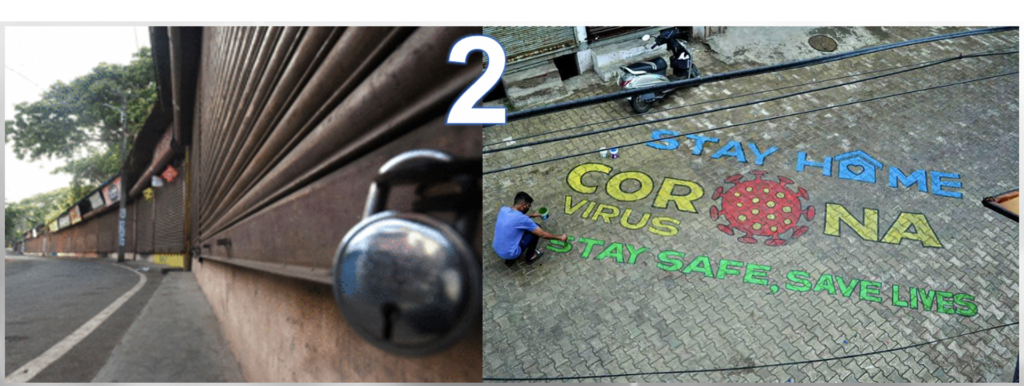Last Mile Logistics - Transformation

Considered the least glamorous part of the retail industry ecosystem, logistics is now the subject of intense innovation and technology investment. With increased competition thanks to an ever-exuberant e-commerce market, customers are being wooed and wowed like never before. Retailers are looking at optimizing their supply chain processes and operations to build efficiencies – efficiencies that will help in delivering the highest levels of customer experience consistently across all channels as well as deliver them at a lower cost every time.
The cost of reaching a merchandise to a customer is a major and at times, debilitating cost item for retailers. And globally, as much as 28% of this cost is the cost incurred on the last mile – and this last mile could be a couple of streets long or as stretched as a 100 kms. Not surprisingly, optimizing on the last mile delivery costs does provide competitive advantage to retailers. And act as a significant factor determining customer engagement and experience.
Against this backdrop, I see the following trends in the action-packed last mile segment:
- Ever increasing preference for last mile or home deliveries – according to a Capgemini report, globally 40% of consumers now rank delivery services as a “must-have” feature for food and grocery purchases. And 20% of consumers are prepared to switch retailers if delivery services are not provided.
- Increased frequency and faster deliveries – with accelerated e-commerce activity, there is the need for a greater number of deliveries, and these made faster. A McKinsey & Company study indicated that millennial consumers are willing to pay up to a 30% premium for same-day delivery. This means orders have to be processed faster and shipments moved through the chain more rapidly than ever before. Backing this up is the Capgemini study that found out that 55% of consumers will switch to a competitor if the competitor offers faster deliveries. The pace of change in this aspect can be gauged from the fact that from same-day deliveries, the focus has now shifted to 1-hour and 2-hour deliveries!
- Transformation in Fulfilment Locations –
- Stores for delivery – For same-day delivery, it is believed that deliveries from a store are 16% cheaper than from a warehouse. To realize this benefit, stores need to be equipped to process and deliver online orders – be click-and-collect enabled.
- Use of dark stores – The use of dark stores for delivery also contributes to driving down cost. Currently, 29% of orders globally are fulfilled from dark stores – an increase in these deliveries by 50% could positively impact profit margins by a healthy 7%.
- Exploring Delivery Points – Self Service Lockers and PUDO (pick-up and pick-off) points (Amazon, Home Depot & Walmart are pioneering this), Delivery to Car (John Lewis is partnering with Jaguar Land Rover’s mobility and venture arm – InMotion – to trial delivery to shoppers’ cars. Amazon has also launched this service in partnership with General Motors and Volvo) and Deliver Inside Customers’ Homes (Waitrose is the first retail supermarket in Britain to offer this service. The Dutch supermarket chain, Albert Heijn, a subsidiary of Ahold Delhaize, is also experimenting with this service) are some of the key innovations being pioneered and explored amongst retailers across the world – apparently, such initiatives bring about a 4% reduction in delivery costs. With this, there is the focus on enabling technology for each of these delivery options.
- Crowdsourcing for deliveries – A Capgemini study found out that 64% of consumers are indifferent to whether delivery is made by a retail store’s employees, private individuals, or third-party couriers and that for an incentive, 55% are willing to deliver products to neighbors in their vicinity (the most popular incentive is monetary). Further, 79% are willing to deliver groceries at a price that is less than the cost incurred by retailers to deliver it themselves. The move is on amongst retailers to create a shared delivery platform that would be a win-win for everyone. A few retailers are also exploring encouraging their own employees to deliver for an additional incentive.
- Bringing Fulfilment In-house – In an effort to totally optimize for efficiencies and tighter control, retailers are building the last mile capabilities inhouse mostly through acquisitions. Target acquired Shipt, an online, same-day delivery startup, for $550 million in cash in 2018, one of the largest acquisitions in Target’s history. The aim was to offer same-day delivery in half of its stores in a year’s time. Though how viable this approach is, remains to be seen as this is not core to a retailer’s operations.
- Innovation in Technology
- Technology at the warehouse/stocking point. It is believed that 70% of warehouse operations cost is labour and 70% of labour time is spent walking around to pick merchandise. The use of automation systems for storage and retrieval, robots to move merchandise and drones to scan items – all are being widely explored to make the warehouses smarter and aligned to a faster. More efficient and accurate supply chain.
- Technology for Last Mile Delivery Innovations. The use of Drones (7’ Eleven was the first to complete a Federal Aviation Administration approved drone delivery in July 2015. A lot of retailers like Amazon have piloted this), Autonomous Vehicles(Walmart, Ford and Postmates are collaborating to use autonomous vehicles by 2021 to reduce last mile delivery costs), Transportation Analytics (route optimizations weed out some of the hidden yet significant cost elements) and Smart Tracking(leveraging the Internet of Things (IoT), smart technology and sensors, retailers can successfully track shipments in real time. Consumers and shippers can both receive SMS alerts, email notifications and even Google notifications for every movement a shipment makes) are examples how technology is being used for last mile delivery innovations
A super-efficient and nimble delivery infrastructure ensures consistent customer experience and superior customer engagement resulting in better retention and business. Delivery speed and convenience clearly impacts customer loyalty and propensity to do more business. Sensing the strategic need to innovate in this area, venture capital firms have also accelerated their investment into last mile logistics companies. This is a space to watch out for!
Sources:
- “7 Top Trends in Last Mile Logistics – The Revolution is Coming”, Adam Robinson, supplychain247.com
- “Parcel delivery – The future of last mile”, McKinsey & Company
- “The last-mile delivery challenge”, Capgemini Research Institute
